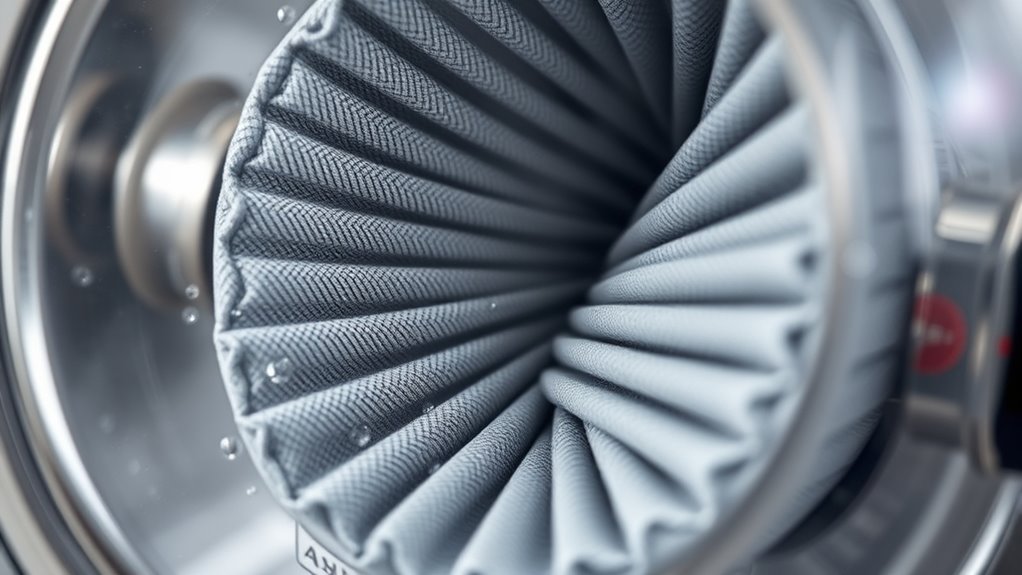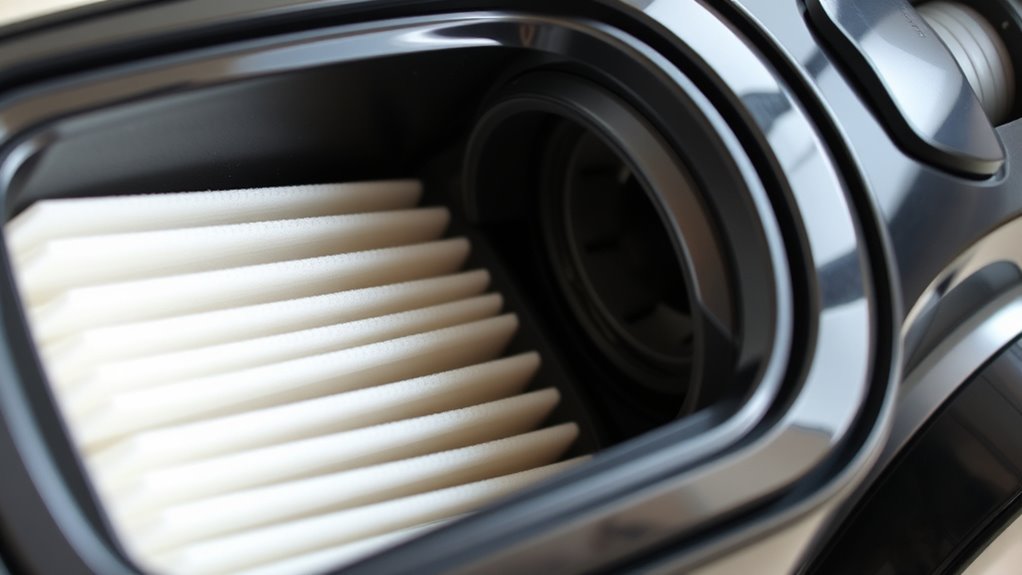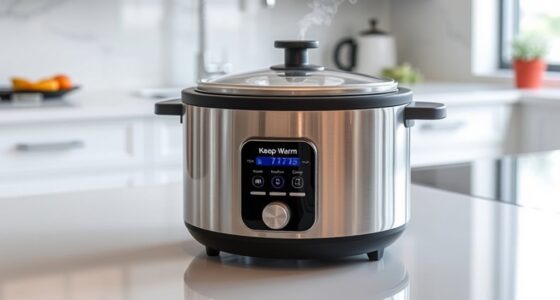To avoid a smelly motor, regularly wash and thoroughly dry your vacuum filters. Rinse filters gently under running water to remove dust and debris, then let them air dry in a well-ventilated area for at least 24 hours. Inspect your filters for damage or staining and replace them if needed. Proper maintenance prevents mold, bacteria growth, and odors, helping your vacuum run efficiently. Continue exploring to discover more tips for keeping your vacuum fresh and odor-free.
Key Takeaways
- Rinse filters gently under running water to remove dust and debris without damaging the material.
- Allow filters to air-dry completely in a well-ventilated area for at least 24 hours before reinstallation.
- Inspect filters for tears or damage; replace if overly stained or damaged to prevent odors and maintain performance.
- Avoid using harsh detergents or chemicals that could degrade filter material and cause musty smells.
- Regularly clean and dry filters to prevent mold growth, bacteria buildup, and unpleasant motor odors.

Have you ever wondered if your vacuum filters are really working their best? If so, you’re not alone. Many people overlook the importance of proper filter maintenance, but it’s essential for both your vacuum’s performance and keeping your home smelling fresh. When filters get clogged with dust, pet dander, and debris, airflow decreases, and your vacuum has to work harder. This not only shortens the lifespan of your appliance but can also cause unpleasant odors to develop inside the motor compartment. Regularly washing and drying your vacuum filters helps prevent these issues, ensuring your vacuum operates efficiently and odor-free.
Proper filter maintenance begins with knowing when to clean your filters. Most vacuum manufacturers recommend washing filters every few months, but this can vary depending on usage and environment. If you notice a drop in suction power or a musty smell whenever you vacuum, it’s a clear sign that your filters need attention. When you wash your filters, it’s *crucial* to do it correctly. Rinse them gently under running water to remove accumulated dust and debris, and avoid using harsh detergents that might damage the filter material. Allow the filter to dry completely before reinstalling it—this step is *vital* for odor prevention. Moist filters can breed mold and bacteria, which contribute to unpleasant smells and can even affect your indoor air quality. Additionally, choosing filters with high-quality filtration can improve overall air purification and extend the life of your vacuum. Drying your filters thoroughly is a key step often overlooked. A damp filter can trap moisture inside the vacuum, creating a breeding ground for mold, bacteria, and musty odors. To prevent this, air-dry the filters in a well-ventilated area for at least 24 hours. Once fully dry, inspect the filter for any signs of damage or wear. If it’s torn, overly stained, or no longer maintaining its shape, it’s time to replace it. This proactive approach not only keeps your vacuum functioning *optimally* but also prevents odors from lingering in your home.
Frequently Asked Questions
How Often Should I Replace My Vacuum Filters?
You should replace your vacuum filters every 3 to 6 months, depending on filter material and usage. If your filters become clogged or develop an unpleasant smell, it’s time for a replacement. Regularly checking and changing filters helps maintain peak suction and prevents odors. Keep in mind that frequent replacements ensure your vacuum operates efficiently and prolongs its lifespan. Adjust the replacement frequency based on how often you vacuum and the filter material.
Can I Use Regular Soap to Wash Vacuum Filters?
You shouldn’t use regular soap to wash vacuum filters because it may damage the filter material. Instead, opt for mild soap or a gentle detergent designed for filters. Wash your filters only when needed, based on the washing frequency recommended by the manufacturer, typically every few months. This helps prevent odors and guarantees your vacuum maintains ideal performance without risking damage to the filter.
Are There Specific Drying Techniques for Different Filter Types?
You should use specific drying techniques tailored to your filter type. For foam filters, gently air-dry them in a well-ventilated area, avoiding direct sunlight to prevent material damage. HEPA filters often require air drying or a careful, slow air circulation process, while cloth filters can be tumble-dried on low heat if compatible. Always consider filter material considerations to prevent warping or deterioration, ensuring your vacuum stays fresh and efficient.
What Are Signs My Filter Needs Replacing Sooner?
Ever notice a musty smell or reduced vacuum power? That’s a sign your filter’s lifespan is nearing its end. You might also see visible dirt buildup or find it harder to dry the filter thoroughly. Replacing your filter sooner helps with odor prevention and keeps your vacuum functioning efficiently. Don’t wait until it’s too late—timely replacement guarantees fresh air and superior cleaning performance.
Do Washable Filters Affect Vacuum Suction Power?
Washable filters can affect your vacuum’s suction power if the filter material isn’t cleaned thoroughly or if it becomes clogged over time. Regularly washing and properly drying the filter helps maintain peak suction, but if you neglect this, you might experience some suction loss. Make sure you follow manufacturer instructions for cleaning, and replace the filter when necessary to keep your vacuum performing at its best.
Conclusion
By regularly washing and drying your vacuum filters, you keep your machine running smoothly and smelling fresh—like a breath of spring air. Neglecting this simple step is like ignoring a small leak that can flood your entire home. Stay proactive, and your vacuum will serve you better and last longer. Just remember, a clean filter is the key to a happy, odor-free motor and a cleaner home. Keep up the routine, and enjoy the fresh air!









